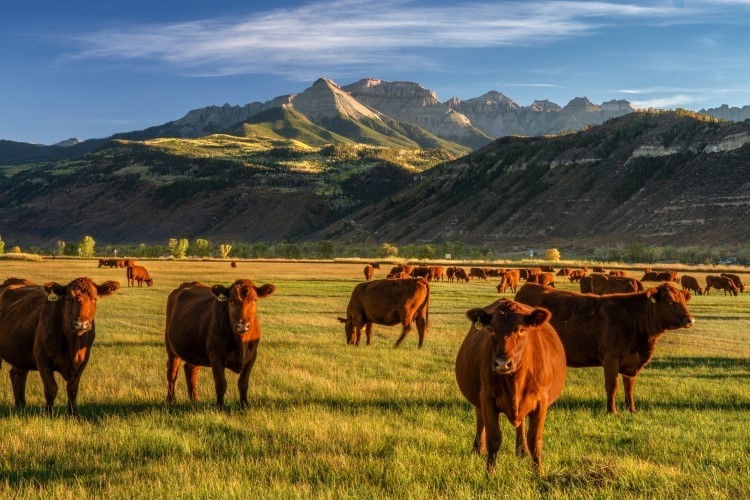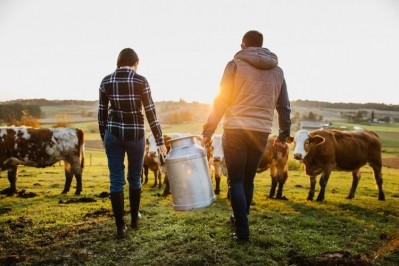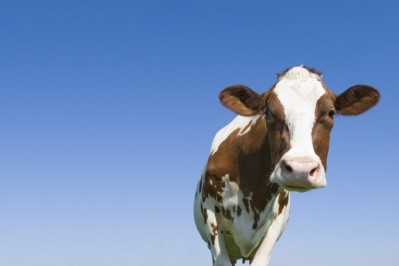'An amazing achievement': USDA unveils payment relief program for organic dairies

Set to be administered by the USDA Farm Service Agency, the program has been allocated up to US$100m, though the final spending will depend on enrolment and each producer’s projected production.
The assistance provided by ODMAP will be provided through unused Commodity Credit Corporation funds remaining from earlier pandemic assistance programs, with payments capped at the first five million pounds of anticipated production, in line with previous dairy programs targeting small dairies.
The program is still in development and details will be released later this year.
'An amazing achievement for USDA'
Trade organizations, including the Organic Trade Association (OTA) and the Northeast Organic Dairy Producers Alliance (NODPA) have long advocated the need for urgent financial support for organic dairies. NODPA executive director Ed Maltby told DairyReporter in December 2022 that current relief programs ‘have unfortunately not been sufficient to address the current situation facing organic livestock producers’. “There are no safety net programs specifically available for organic dairy that address economic spikes in the supply of feed and inputs,” he commented at the time. The USDA says ODMAP has been designed to help small- and medium-sized organic dairies ‘that have faced a unique set of challenges and higher costs over the past several years…compounded by the ongoing pandemic and drought conditions’.
Approached by DairyReporter over the news, Maltby praised the USDA for responding 'within the timeline set for them', calling this 'an amazing achievement for USDA'. "We thank the USDA FSA leadership and staff who have dedicated their time to honoring the commitment made by Congress. We appreciate that this is the first time that they have been asked to find a program for organic dairy that can meet the legal requirements of how the different programs have been structured by Congress and benefit the needs of the targeted community of the most affected organic dairy farmers that are suffering from a stable, low pay price and a unprecedented increase in inputs."
‘Farmers still need further support’
Meanwhile, the OTA has cautiously welcomed the proposals, but the body has stressed that additional support is still required.
OTA said in a statement: “The Organic Trade Association welcomes the creation by the USDA of a new Organic Dairy Marketing Assistance Program to help small- and medium-sized dairy operations who, after weathering the pandemic, are now dealing with additional challenges.
“Unprecedented shocks to global trade necessitate action and this action is critically necessary to ensure the livelihood of many organic dairy farmers. Organic dairy farmers are facing catastrophic economic challenges as the availability of organic feedstuffs has declined dramatically, resulting in costs climbing significantly over the past 18 months.
“OTA and its members have spearheaded a drive in Congress to bring this urgent issue to the attention of USDA, and we thank USDA for urgently recognizing the unique needs of organic producers.
“Beyond the ODMAP, organic dairy and poultry farmers still need further support – OTA will continue to advocate for appropriate and relevant risk management tools to address the unique needs of organic producers.”
Clarity needed on what is 'national estimates of marketing costs'
Despite welcoming the announcement, NODPA's Maltby stressed that more work needs to be done to develop the program, which he says under the current draft 'does not meet the requirement' of bringing benefits to small- and mid-sized organic dairies. According to Maltby, a cash cap should be introduced so that larger dairies do not end up receiving more support than smaller operations. "The farmers that need help are the small to mid-size operations, [comprising] from 50 to 300 organic milking cows. A herd of 300 organic milking cows averaging 15,000 pounds of milk annually will market approximately five million pounds of milk a year. In order to assess the effectiveness of the program, we need clarity on the definition of national estimates of marketing costs," he told us, referring to the 'national per hundredweight payment' outlined by the USDA.
"The majority of organic dairy herds are wholesaling their product directly from the farm. They do have some minimal direct marketing costs - co-op handling dues, certification expenses, CWT program, State and Federal milk promotion, dairy check-off, producer organization dues - and they have one large marketing cost - milk hauling from the farm to the processor. This cost will vary with the buyer and with the size of the farm. This hauling charge is taken out of the milk check directly, and without the ability to market their milk by hauling it to the processor, it would sit at the farm.
"If USDA can gather the data about marketing costs per cwt, then every organic dairy producer will be able to claim up to the first five million pounds of anticipated production, from a 21,400-cow herd to a 20-cow herd. The larger operation will receive more dollars than the smaller operations that are in most need."
Asked to elaborate, Maltby explained: "This process will not benefit the small to mid-size operation unless there is a high $ per cwt with a cash cap of, for example US$40,000, per certified organic dairy operation.
"The average size of organic dairy herds is 78 milking cows, so a more equitable way would be to give each organic dairy farm US$40,000 towards the marketing cost of their milk in 2023. The most recent USDA organic survey report in 2021 gave the number of organic dairy farms as 2,528 and those that reported income from sales as 2023. If you divide US$100m by US$40,000 it would cover 2,500 farms. Assuming some of the larger operations would not apply for the payment, there would be enough to cover all the farms that did apply."
Second round of PMVAP announced
Alongside the news about ODMAP, the USDA revealed that a second round of payments under the Pandemic Market Volatility Assistance Program will be made available to eligible dairy farmers. Payments can be claimed for fluid milk sales between five and nine million pounds from July through December 2020; this level of production was not eligible for payment under the first round of the program. Payment rates will be identical to the first round of payments - 80% of the revenue different per month.
The first round of payments distributed over US$250m to over 25,000 dairy farmers, who received the full allowable reimbursement on fluid milk sales up to five million pounds. For the second round, USDA will again distribute monies through agreements with independent handlers and cooperatives, with reimbursement to handlers for allowed administrative costs.
The department will contact handlers with eligible producers to notify them of the opportunity to participate.








